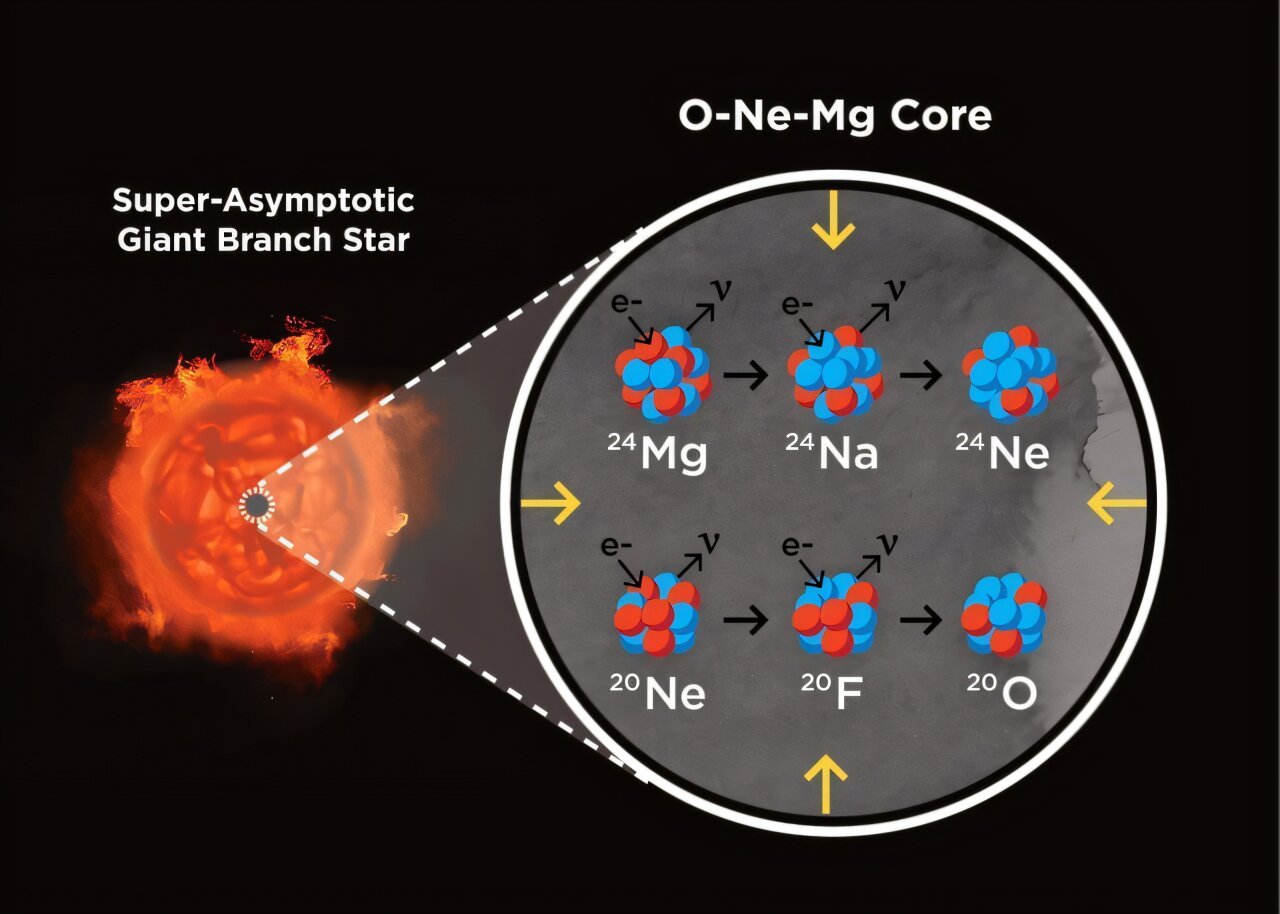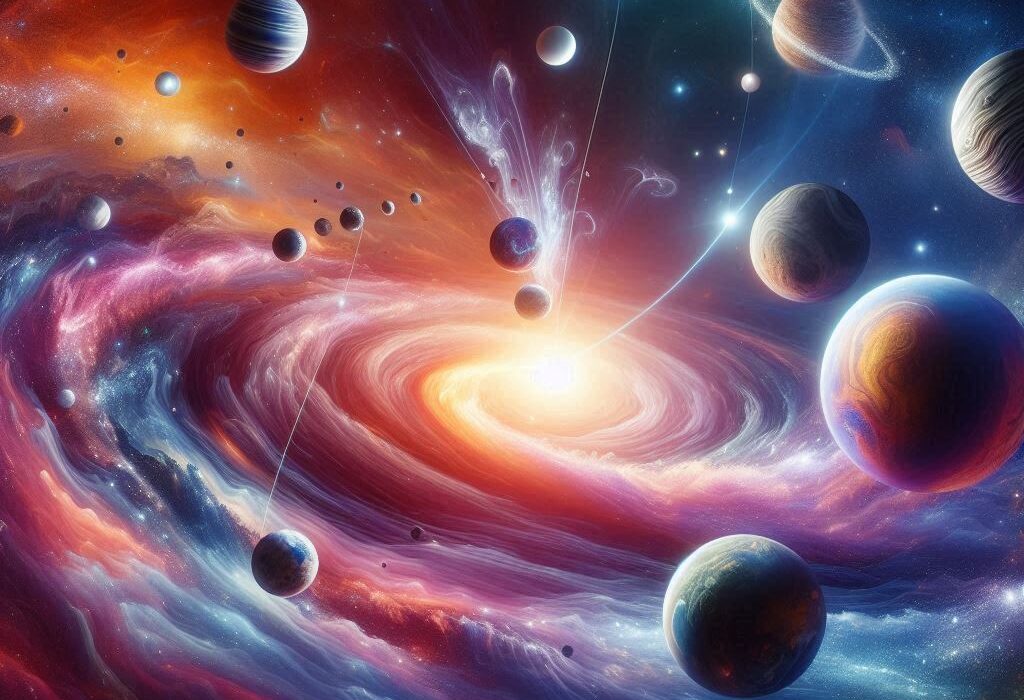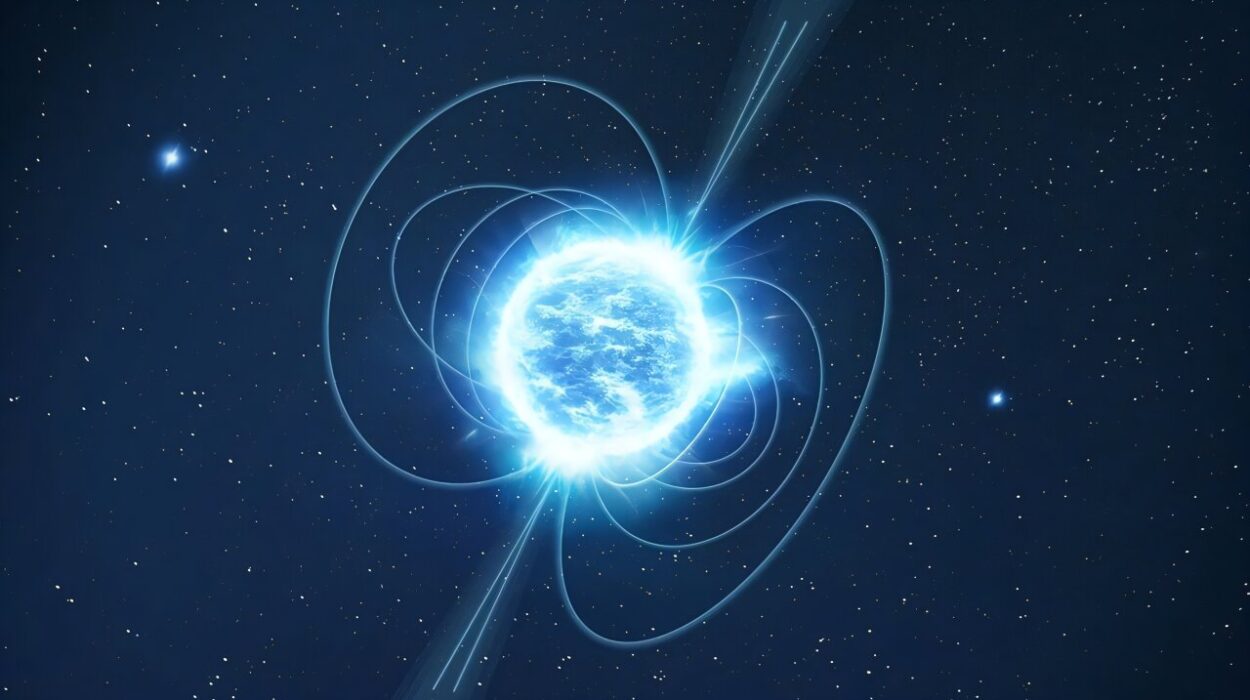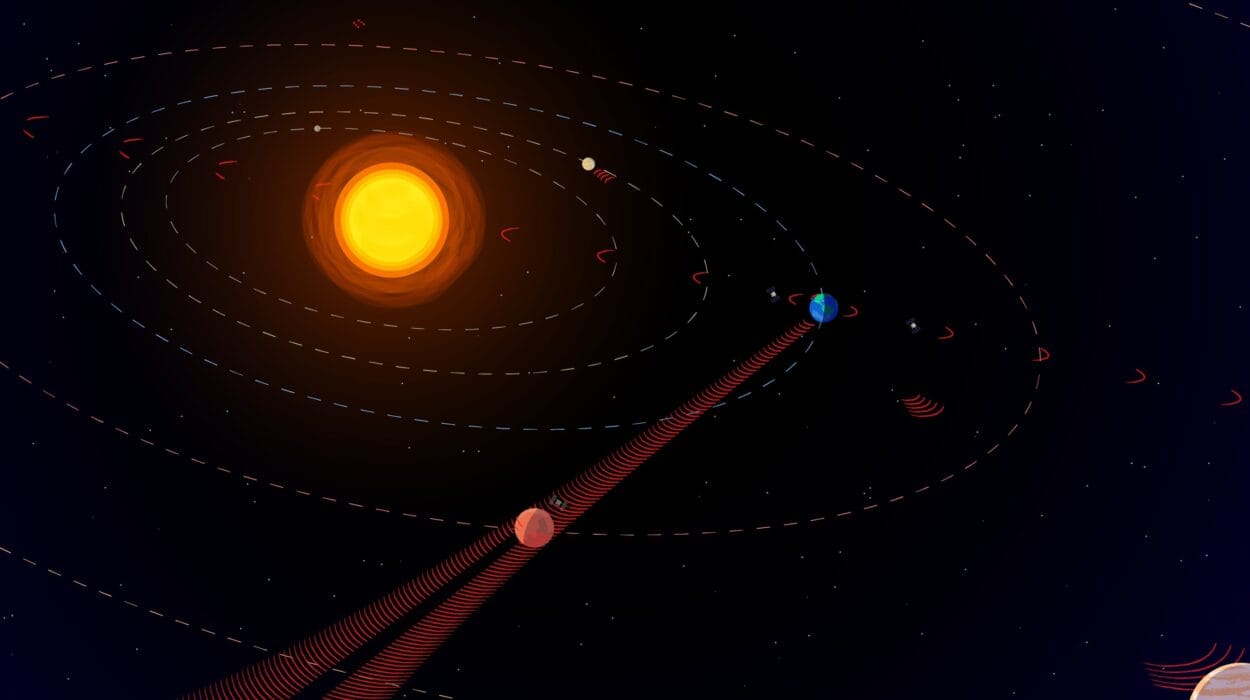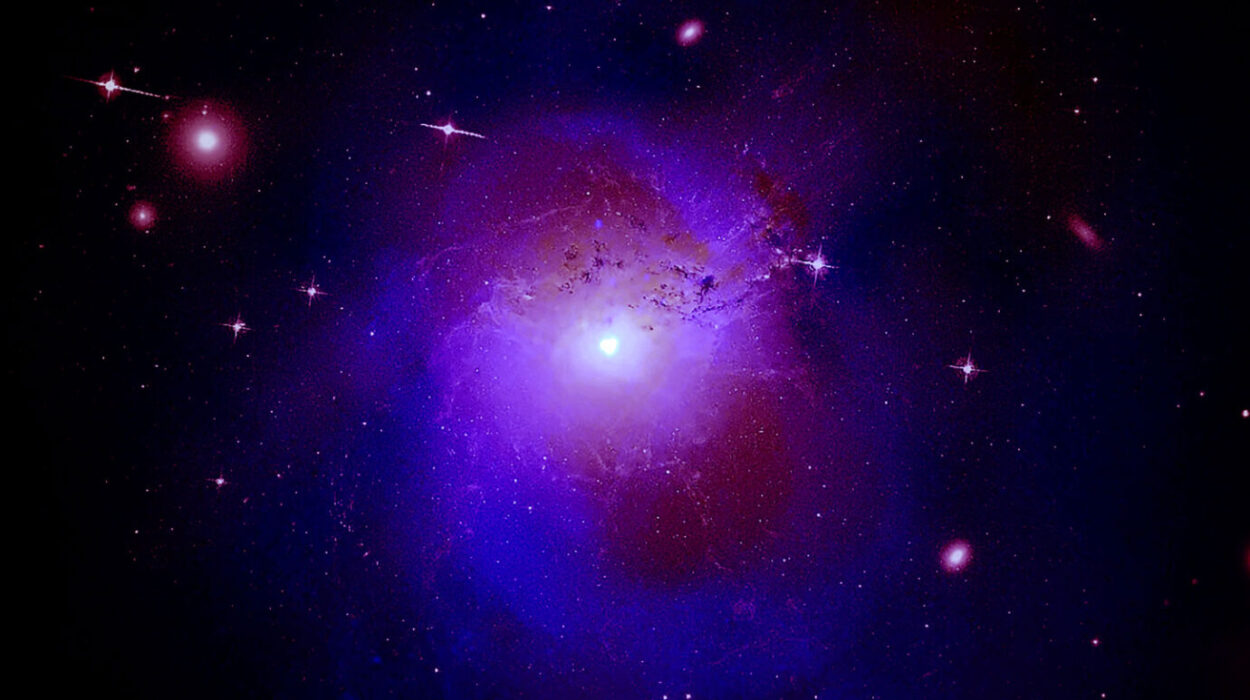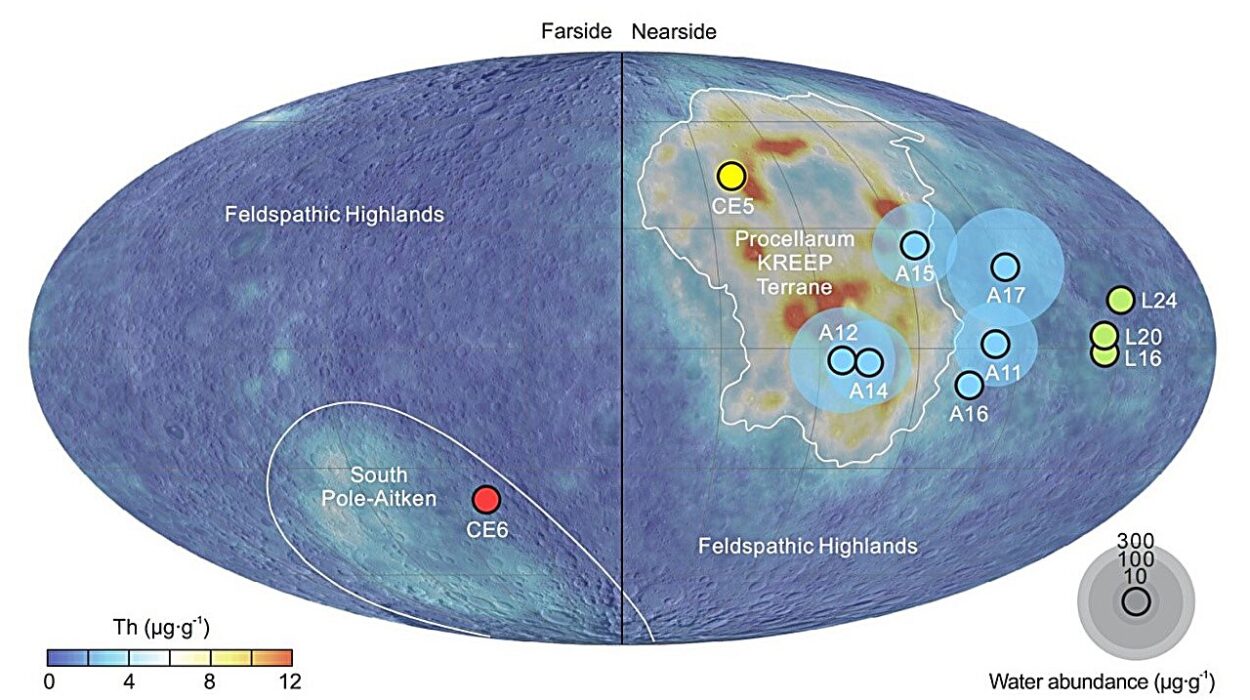In the grand theater of the cosmos, stars live brilliant, turbulent lives. They are born from the cold breath of interstellar clouds, ignite in nuclear fire, and eventually die in spectacular explosions that scatter the elements of life across the universe. Yet, amid all this radiance, there is another, more elusive actor—dark matter. Invisible, silent, and pervasive, dark matter has long been thought to sculpt galaxies and bend light, but what if it also influences the stars themselves?
A recent study by researchers from INFN-Pisa and the University of Pisa suggests precisely that. Their work explores an intriguing possibility: that a mysterious form of dark matter—known as asymmetric dark matter (ADM)—could alter how certain stars die and give birth to some of the universe’s most enigmatic remnants: neutron stars.
This research, published in the Journal of High Energy Astrophysics, offers the first self-consistent stellar-structure model of how ADM might shape the violent deaths of stars known as electron-capture supernovae (ECSNe). The findings open a new window into both the inner lives of stars and the hidden nature of dark matter.
The Quiet Stars Destined for a Strange Death
To appreciate this discovery, one must first understand what an electron-capture supernova is—and how it differs from other cosmic explosions.
Stars with initial masses roughly eight to ten times that of our Sun live precarious lives on the boundary between survival and catastrophe. Too small to undergo the full fury of an iron-core supernova and too massive to fade gently as white dwarfs, these stars end their lives in a unique way.
As they near death, their nuclear furnaces have fused lighter elements into oxygen, neon, and magnesium—elements that no longer yield energy through fusion. What remains is a dense, degenerate core supported not by heat, but by the quantum pressure of electrons—a strange, invisible resistance born from the principles of quantum mechanics.
However, at some point, this delicate balance falters. As the core grows denser, the nuclei of neon and magnesium begin to capture electrons. When this happens, the electron pressure that supports the core collapses catastrophically. Gravity takes over, and in a heartbeat, the star’s core collapses inward.
The result is an electron-capture supernova—a comparatively faint, low-energy explosion that tears away the star’s outer layers and leaves behind a neutron star, a sphere barely 20 kilometers wide but so dense that a teaspoon of its material would weigh a billion tons.
It was once thought that these explosions were purely the product of nuclear physics. But new evidence suggests something even stranger may be at play.
A New Mystery in the Supernova Story
In 2021, astronomer Koh Takashi Hiramatsu and his colleagues published a groundbreaking study identifying Supernova 2018zd as the first strong observational evidence of an electron-capture supernova. This event confirmed a long-standing prediction made in the 1980s by Japanese astrophysicist Ken’ichi Nomoto, who first proposed this unique type of explosion.
When physicist Ignazio Bombaci from the University of Pisa encountered Hiramatsu’s paper, a spark ignited. Bombaci had already been supervising research on the properties of fermionic asymmetric dark matter in neutron stars, with his student Domenico Scordino. The connection was immediate and profound: if dark matter can influence the structure of neutron stars, might it also affect how their progenitor stars collapse and explode?
This question led Bombaci, Scordino, and their colleague Vishal Parmar to embark on a new theoretical journey—one that would blend stellar astrophysics, quantum mechanics, and cosmology into a single framework.
When Dark Matter Meets a Dying Star
The team began with a simple yet profound hypothesis: that a modest admixture of dark matter could exist within the dense cores of stars destined to undergo electron-capture supernovae.
Unlike ordinary matter, asymmetric dark matter does not annihilate with itself. Instead, it behaves somewhat like ordinary baryonic matter, accumulating over cosmic time in gravitational wells—such as the cores of stars. If even a small fraction of ADM were to mix into a stellar core, its gravity could subtly alter the star’s internal balance.
To explore this, the researchers developed a two-fluid relativistic model—a sophisticated mathematical framework that treats ordinary matter and dark matter as separate fluids interacting only through gravity. Ordinary matter, composed of nuclei and electrons, followed the physics of electron capture and nuclear interactions. Dark matter, by contrast, was modeled as a cold, ideal Fermi gas—a sea of particles obeying quantum degeneracy pressure, similar in spirit to the electrons that support white dwarfs.
The result was a self-consistent picture of how these two forms of matter coexisted within a single star.
Mapping the Collapse
By numerically solving the stellar structure equations, the team examined a wide range of dark matter particle masses and fractions. Their simulations revealed that the presence of dark matter within the core could significantly alter the star’s density profile and lower the mass threshold for collapse.
In other words, even a small contribution from dark matter could cause a white-dwarf-like core to reach instability at a lower gravitational mass than would otherwise be expected.
This subtle effect has dramatic consequences. A star influenced by dark matter would collapse sooner and more gently, producing a weaker supernova explosion and leaving behind a lighter neutron star—perhaps even below the smallest known neutron star mass of 1.174 solar masses, observed in pulsar PSR J0453+1559.
The implications are striking. Dark matter, once thought to act only on galactic scales, might play a hidden but vital role in shaping stellar deaths and the birth of neutron stars.
Shadows Within the Core
What does it mean for dark matter to influence a star’s collapse?
The key lies in how gravity, pressure, and quantum mechanics balance one another in degenerate stellar cores. In ordinary electron-capture supernovae, the core’s fate depends on the critical mass at which electron capture begins. If dark matter adds even a small extra gravitational pull without contributing pressure in the same way as ordinary matter, it can tip this balance earlier, making collapse inevitable at a lower mass.
This gravitational “nudge” changes everything: the timing, the energy release, and the nature of the remnant. The team’s model shows that stars seeded with dark matter could form neutron stars that are both lighter and less energetic than those produced by traditional models.
In essence, dark matter acts as a quiet sculptor—shaping the final moments of stellar life without ever being seen.
The First Stellar-Structure Model of Its Kind
What makes this study remarkable is its self-consistency. It is the first to integrate dark matter physics directly into stellar structure calculations, rather than treating it as an external factor.
Using a general relativistic two-fluid formalism, the researchers accounted for both the ordinary and dark matter components under a shared gravitational field. They modeled the progenitor star as a neon-rich white dwarf, incorporating realistic equations of state that capture the physics of electron capture and nuclear degeneracy.
For the dark matter, they employed the framework of a degenerate Fermi gas, varying particle mass and density to see how different scenarios affected the outcome. This meticulous approach allowed them to map a continuous evolutionary link between white-dwarf progenitors and their neutron star remnants, connecting two ends of stellar evolution with unprecedented detail.
The model stands as a powerful theoretical tool, capable of predicting how subtle interactions between visible and invisible matter may shape the universe’s most violent transformations.
The Birth of Unusually Light Neutron Stars
One of the most compelling predictions emerging from this research is the existence of unusually low-mass neutron stars—objects far lighter than conventional theory allows.
Such stars could provide the first indirect evidence that dark matter truly resides within stellar interiors. If future astronomical observations uncover neutron stars with masses significantly below one solar mass, it would challenge existing models of stellar collapse and strongly suggest that something else—something unseen—is at work.
Moreover, the same mechanism could explain certain low-energy supernovae—those that appear fainter and less explosive than typical core-collapse events. These dim cosmic outbursts may, in fact, be dark matter–influenced explosions, the dying breaths of stars reshaped by the universe’s hidden mass.
A New Window into the Dark Universe
The implications of this research reach far beyond stellar physics. If dark matter can influence how stars live and die, then stars themselves become natural laboratories for probing the fundamental nature of dark matter.
Unlike particle detectors buried deep underground or spacecraft scanning the cosmic microwave background, stars provide a macroscopic stage where dark matter’s gravitational effects can manifest on observable scales. The patterns of supernova brightness, the masses of neutron stars, and even the distribution of compact remnants across galaxies could all bear the fingerprints of dark matter.
As Vishal Parmar explained, this new perspective turns astrophysics into a form of cosmic detective work, using the deaths of stars as clues to the universe’s most elusive substance.
The Road Ahead: Testing the Theory
The Pisa team is now extending their model, refining it with more realistic compositions and exploring a broader range of dark matter properties. They hope to identify observable signatures—specific phenomena that could confirm or refute their predictions.
Future observations may provide the necessary evidence. Astronomers are already cataloging faint supernovae and weighing neutron stars with increasing precision using gravitational-wave data and pulsar timing. These tools could soon reveal whether some neutron stars truly lie below the expected mass threshold—and if so, whether dark matter might be the missing piece of the puzzle.
The researchers also plan to connect their theoretical work with the growing field of multi-messenger astronomy, which combines light, neutrinos, and gravitational waves to build a comprehensive picture of cosmic events. If dark matter affects stellar collapses, its influence might even leave traces in the gravitational-wave signals emitted during supernova explosions.
The Cosmic Interplay of the Seen and Unseen
At a deeper level, this research represents a poetic fusion of opposites: light and darkness, matter and shadow, visibility and invisibility. It reminds us that even the most luminous events in the universe—the birth of neutron stars and the death of suns—may be shaped by forces we cannot see.
Dark matter, though silent, could be one of the most powerful sculptors in the cosmos, influencing not just galaxies but the individual stars that burn within them. Its gravitational touch may determine which stars explode, how they die, and what remains when the fire is gone.
This idea reshapes our understanding of the cosmos, revealing that every supernova may tell not one story, but two: the story of the visible universe and the story of the invisible one that quietly moves it.
A Universe More Mysterious Than We Imagined
The study by Bombaci, Scordino, and Parmar offers more than just a theoretical advance—it rekindles a sense of wonder. It shows that the frontier of physics does not end at the scale of particles or galaxies, but lies wherever light and darkness meet.
If future observations confirm their predictions, it will mean that dark matter—this silent majority of the cosmos—does not merely shape the structure of galaxies, but also the destinies of stars themselves.
In that realization, we glimpse something profound: the same shadowy substance that holds galaxies together may also help decide the fate of suns. The universe, in all its brilliance and obscurity, is a tapestry woven from both matter and mystery—and in its darkest threads, we may yet find the answers to how stars live, die, and are reborn.
More information: Vishal Parmar et al, Triggering electron capture supernovae: Dark matter effects in degenerate white-dwarf-like cores of super-asymptotic giant branch stars, Journal of High Energy Astrophysics (2026). DOI: 10.1016/j.jheap.2025.100470.
